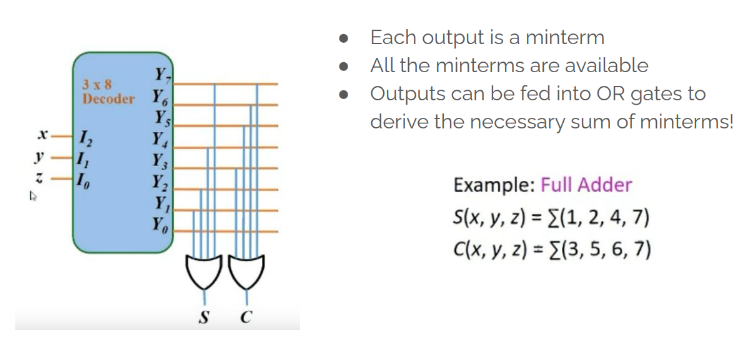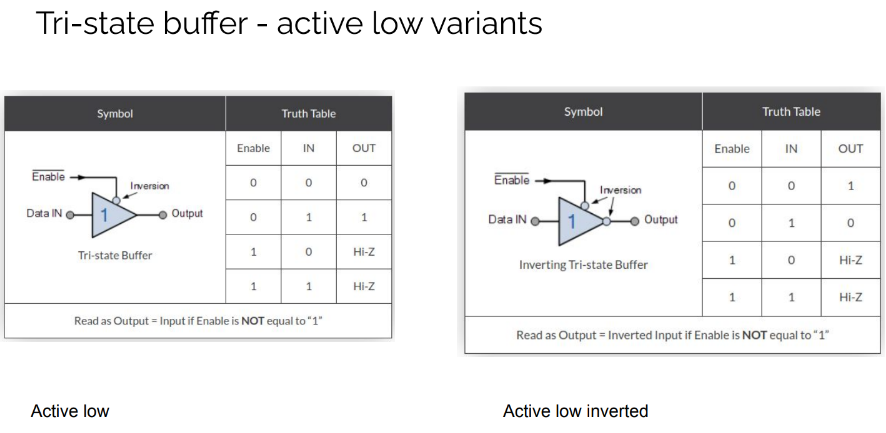Combinational Logic Elements
Computer Organization and Digital Design
2nd Semester
Combinational logic circuits produce outputs based only on current inputs. They do not have memory.
1. Decoder
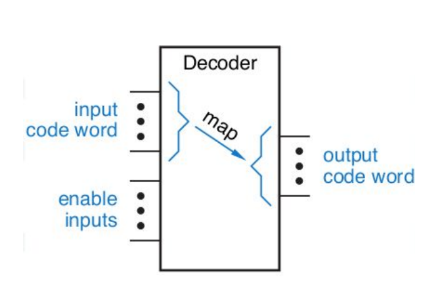
- Converts binary input into maximum of m = 2n or less unique output lines.
- Common types: 2-to-4, 3-to-8 decoders.
- Example: Used in memory address decoding.
2-to-4 Decoder
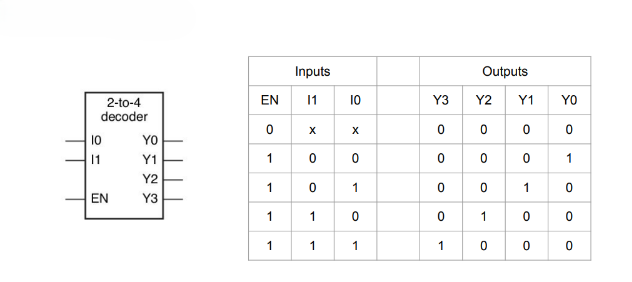
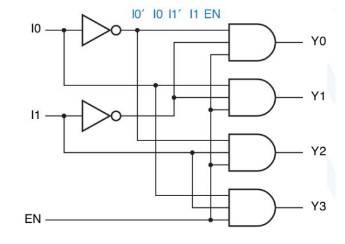
3-to-8 Decoder
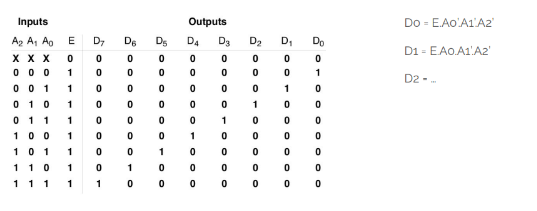
Decoder expansion
- Each minterm → one AND gate
- Large decoders → need many-input ANDs (not practical)
- Use small decoders → build big decoder (hierarchical)
- Final AND gates → only 2 inputs
- ANDs implement minterms
Example:-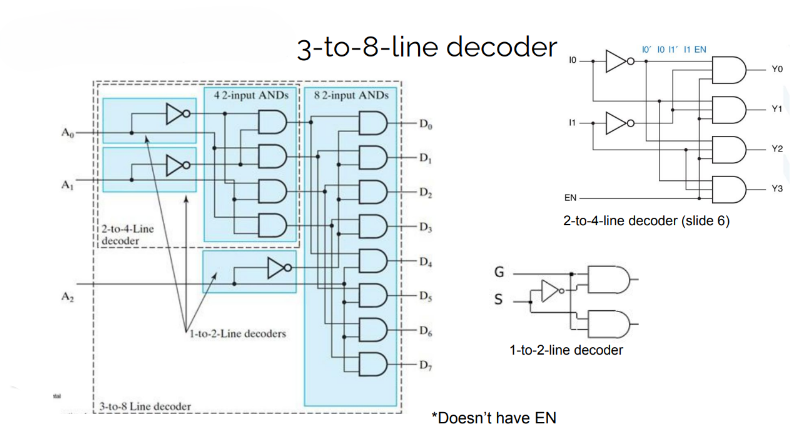
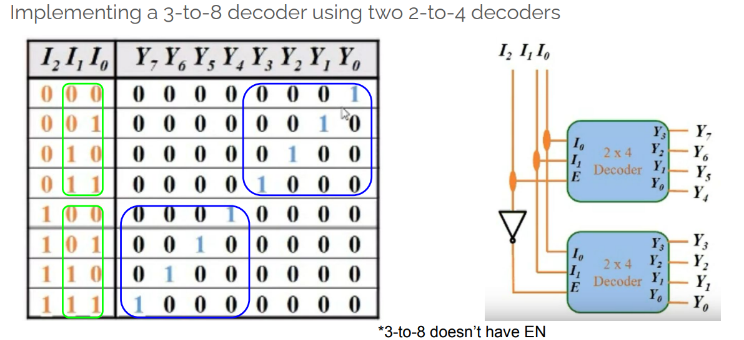
Implementing logic functions using a decoder
2. Encoder
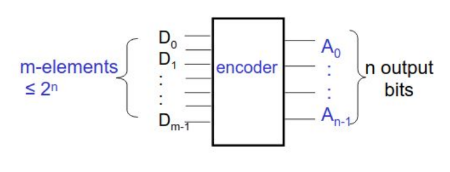 Opposite of Decoding:
Opposite of Decoding:
- m-bit input → n-bit output (n ≤ m ≤ 2ⁿ)
- Input: one-hot (only one 1)
4-to-2 encoder
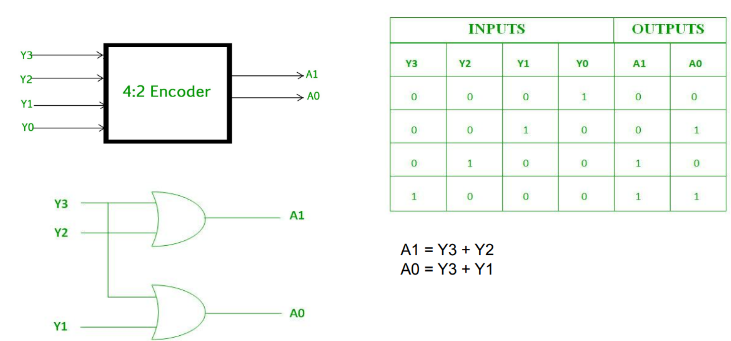
8-to-3 line encoder (octal-to-binary encoder)
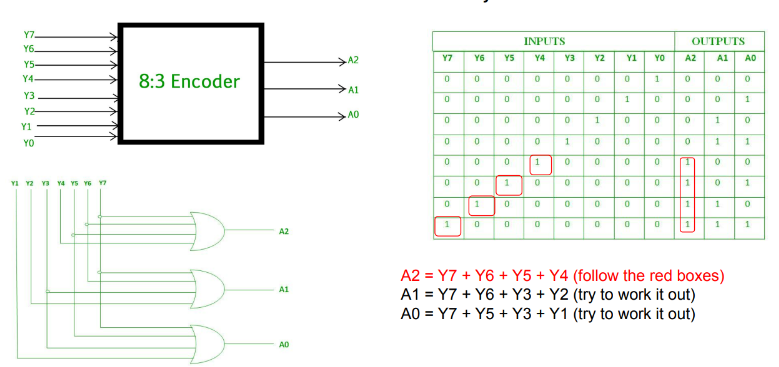
Decimal to BCD encoder
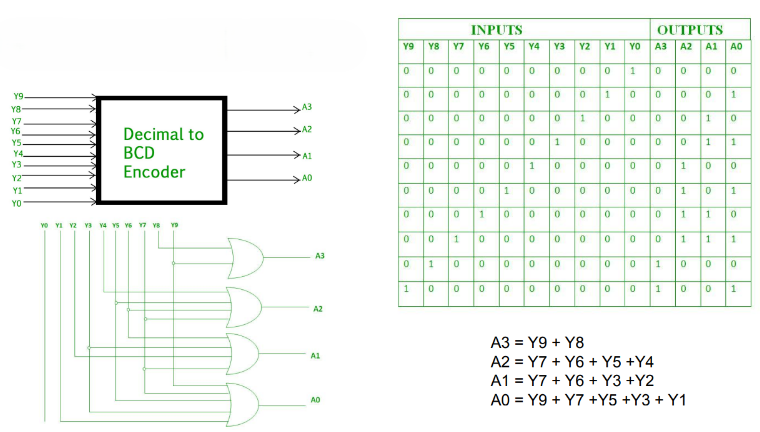
Priority encoder
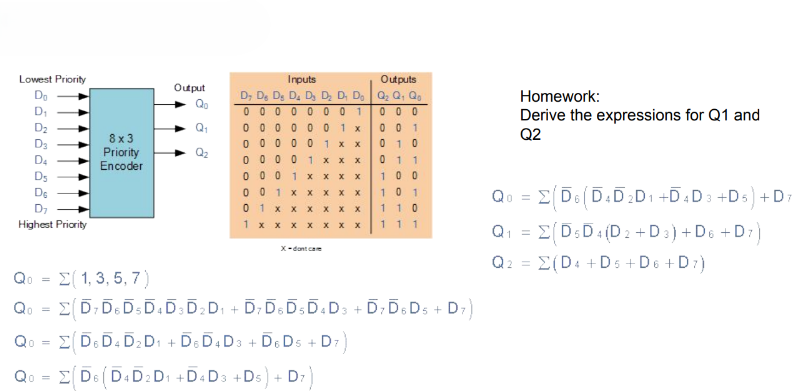
Example application:
- Positional encoder
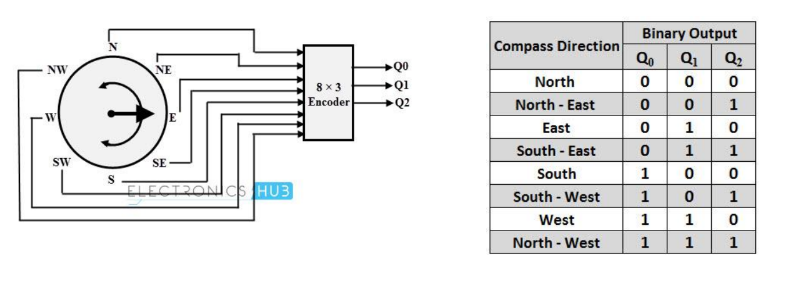
3. Multiplexer (MUX)

- Selects one of many input lines and forwards it to a single output.
- Controlled using select lines.
2 input MUX
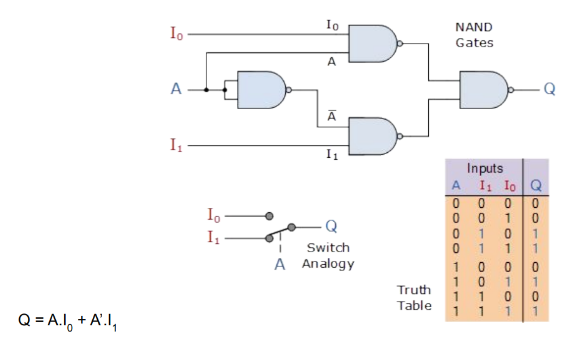
4-to-1 MUX

Difference between Multiplexer, Decoder, and Encoder
| Feature | Multiplexer (MUX) | Decoder | Encoder |
|---|---|---|---|
| Purpose | Selects one input to pass to output | Converts binary input to 1-hot output | Converts 1-hot input to binary output |
| Inputs | Multiple data inputs, select lines | n input lines | 2ⁿ input lines |
| Outputs | Single output | 2ⁿ output lines | n output lines |
| Control Signals | Select lines | Input acts as select | No select; active input only |
| Direction | Many → 1 | n → 2ⁿ | 2ⁿ → n |
| Example Use | Data routing | Address decoding | Priority coding |
4. Digital Buffers
Single input digital buffer
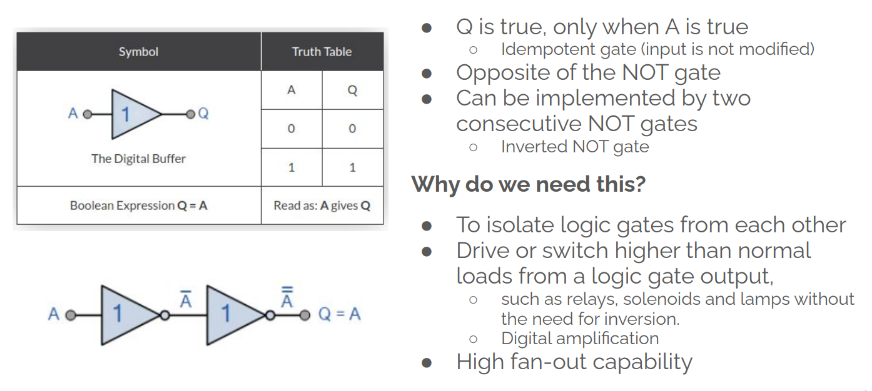
Three state (Tri State buffer)
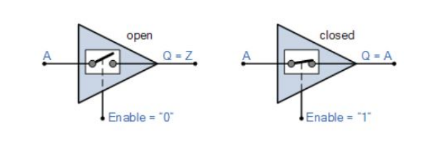
Tri-state Buffer:
- 2 logic levels (0,1), 3 output levels (0,1, High-Z)
- EN=0 → High-Z (acts like open circuit)
- Used to isolate output from bus
- Allows multiple devices to share same bus
- Common in data buses (e.g., computer peripherals)
Tri-state Digital Buffer Data Bus Control
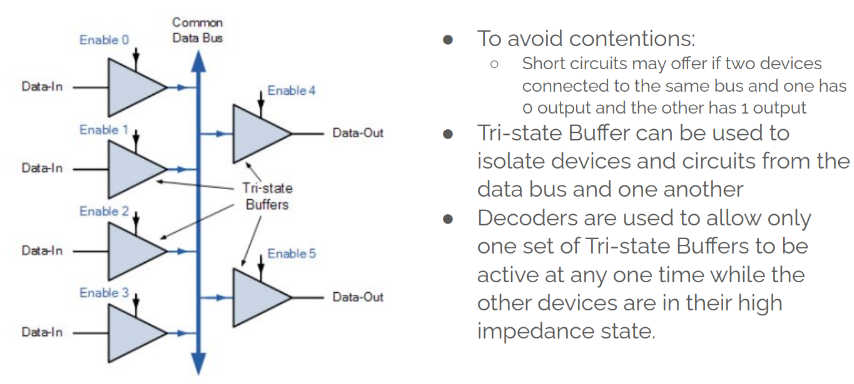
Tri-state Digital Buffer Control
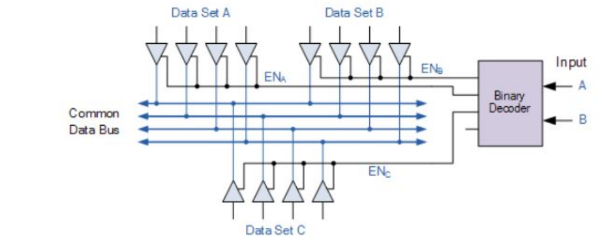
- allowing only one set of data to pass either a logic “1” or logic “0” output state onto the bus
- all the other tri-state outputs connected to the same bus lines are disabled by being placed in their high impedance Hi-Z state.
There are four types of tri-state buffers:
-
- Active High tri-state buffer
-
- Active high inverting tri-state buffer
-
- Active Low tri-state buffer
-
- Active low inverting tri-state buffer
Tri-state buffer - active high variants
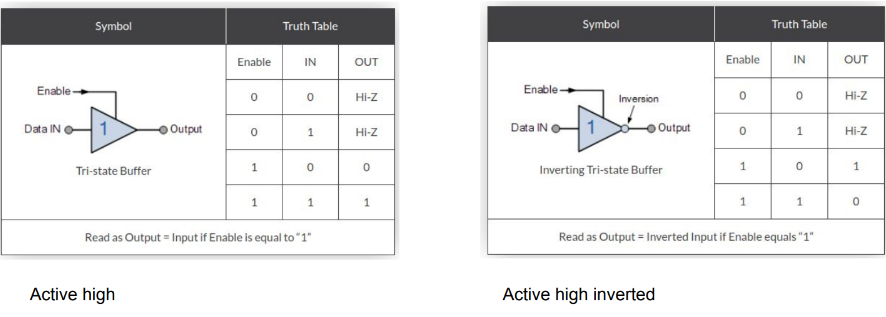
Tri-state buffer - active low variants
5. Comparator
- Compares two binary numbers.
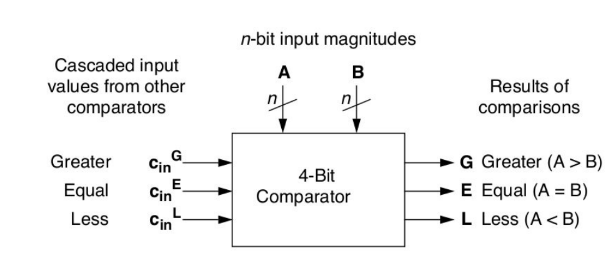
Types of Comparators
-
Equality Comparator
- Single output
- Output HIGH if A = B, else LOW
-
Magnitude Comparator
- Three outputs:
- A < B
- A = B
- A > B
- Three outputs:
1-bit magnitude comparator

2-bit magnitude comparator
-
Designing
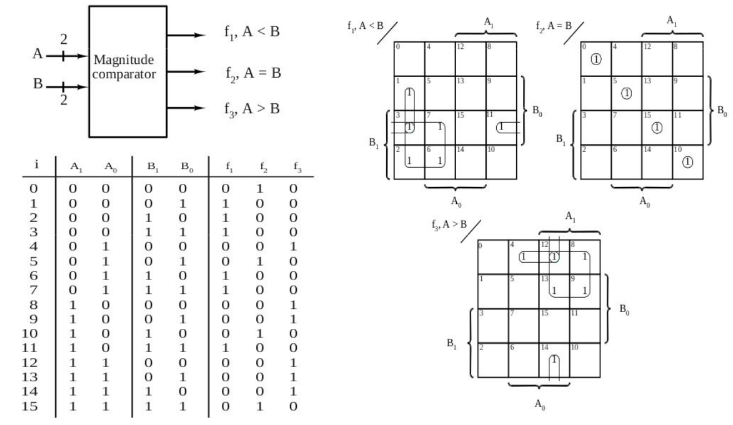
-
Realizing
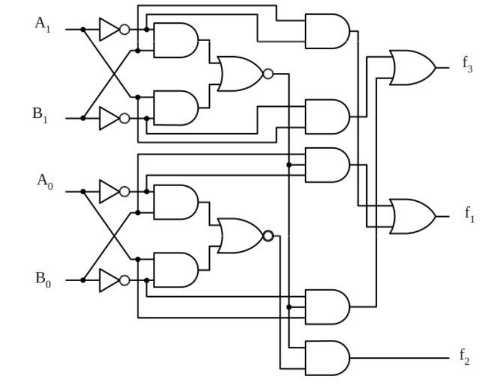
N-bit magnitude comparator
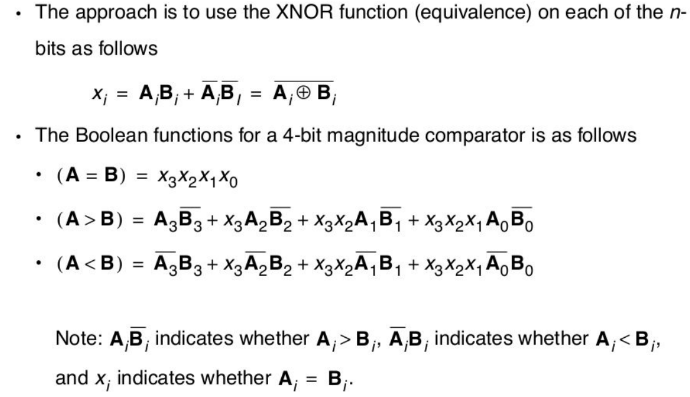
6. Adders, Subtractors, and ALUs
Adders:
- Do binary addition
- Inputs: two or more binary numbers
- Outputs: SUM and CARRY (Cout)
Half Adder: Adds two bits.
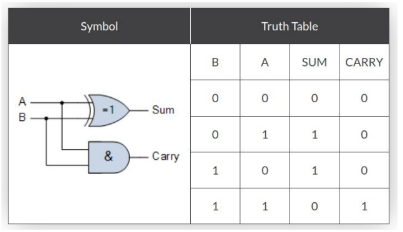
Full Adder: Adds three bits (including carry-in).
- Has an additional input bit C in to represent a carry-in bit coming from a
previous addition step

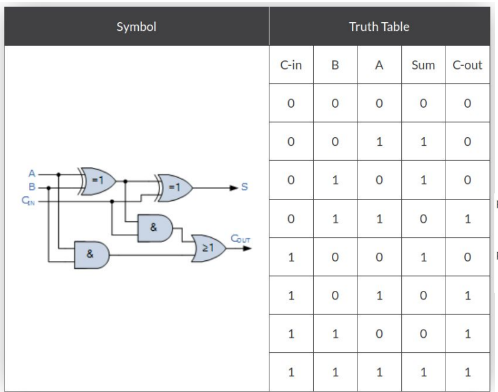
Full adder implementation with half adders
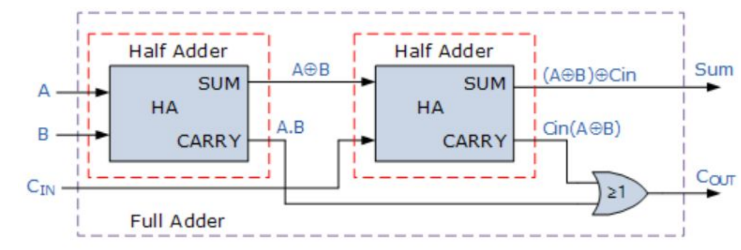
Ripple Carry Adder
- Uses n full adders connected in series
- Carry ripples from LSB to MSB (right to left)
4-bit ripple carry adder
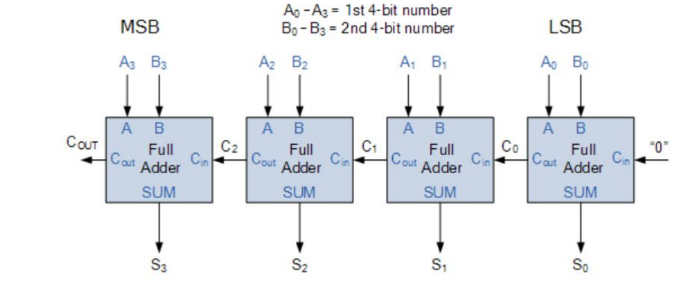
- Disadvantage: output will not be valid until any carry-input has “rippled” through every full adder in the chain
Carry Lookahead Adder (CLA)
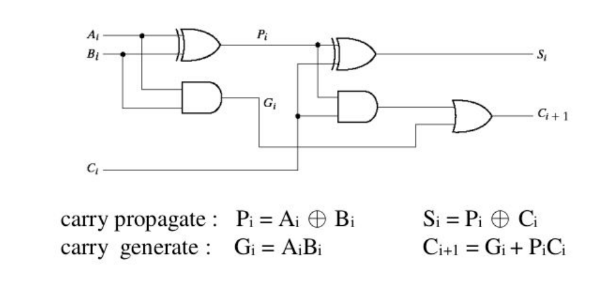
- Speeds up addition by computing carries in parallel
- No need to wait for ripple from LSB to MSB
- At each bit:
- Generate carry (from xi and yi)
- Propagate carry (pass carry-in to carry-out)
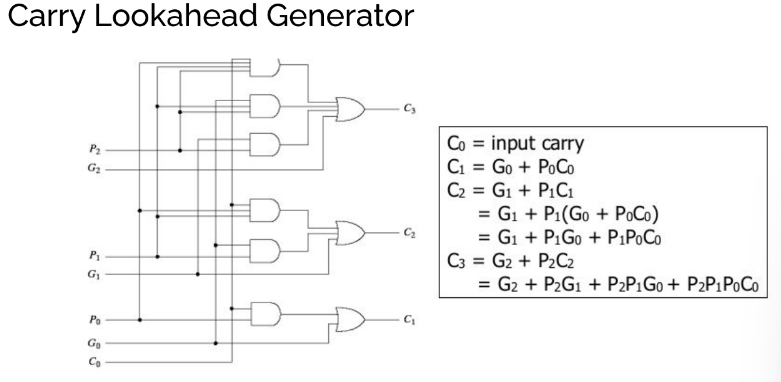
- 3 levels of delay:
- Generate & propagate signals
- Carry lookahead (sum-of-products)
- Faster than ripple carry due to parallel carry logic
Subtractors:
- A – B = A + 2’s complement of B
- 2’s complement: B’ + 1
- Circuit: Adder + inverters on B inputs
- Set input carry C0 = 1
4-bit Adder-Subtractor
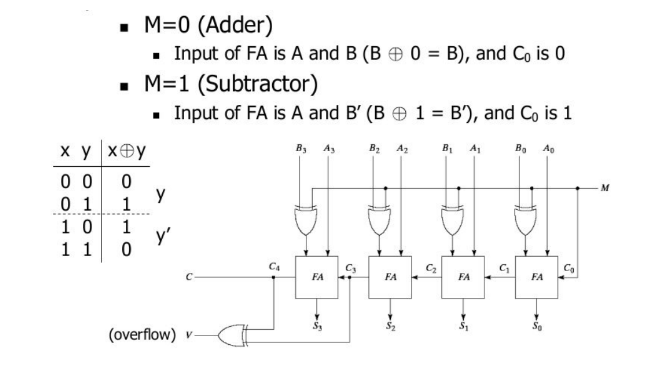
Overflow:
- Happens when result > range of bits
- Common in signed binary addition/subtraction
- Detected when:
- Two positives → negative result
- Two negatives → positive result
- Example
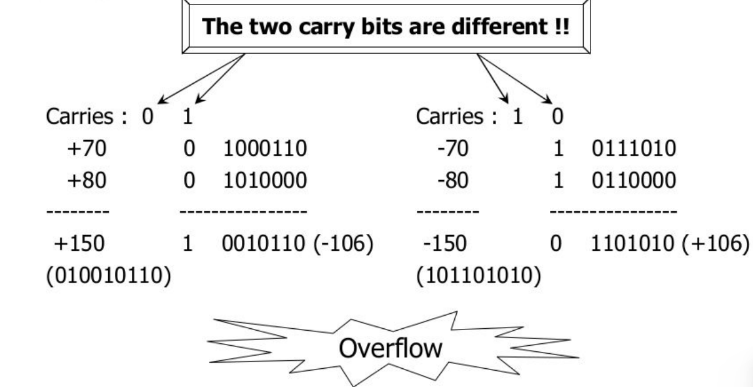
ALUs (Arithmetic Logic Units):
- Perform arithmetic and logical operations.
- Core component of a CPU.
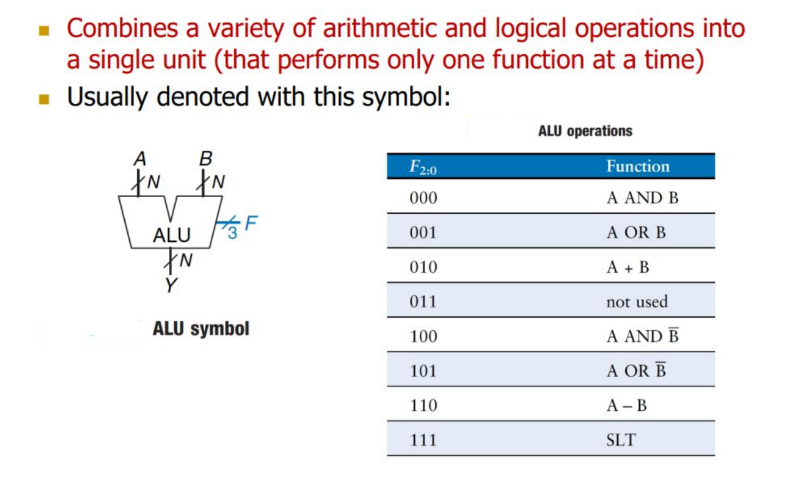
- Basic ALU Architecture
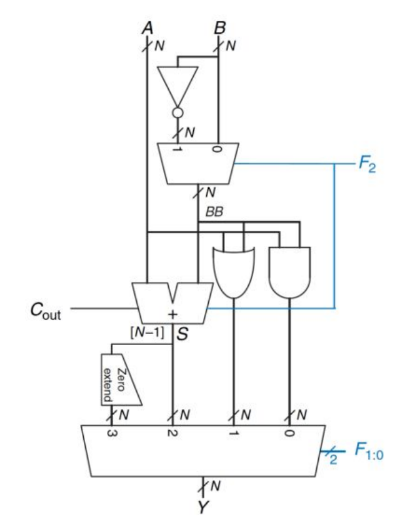
7. Lookup Tables (LUTs)
- Memory-based way to implement logic
- Store outputs for all input combinations
- Inputs = address, output = stored value
- No need for logic gates
- Can be cascaded for complex functions
Half adder using LUTs
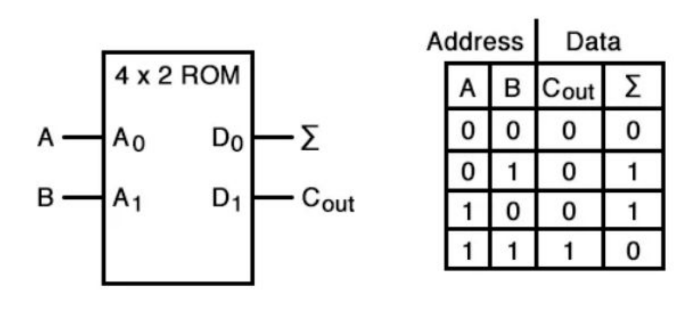
Multiplexers as LUTs
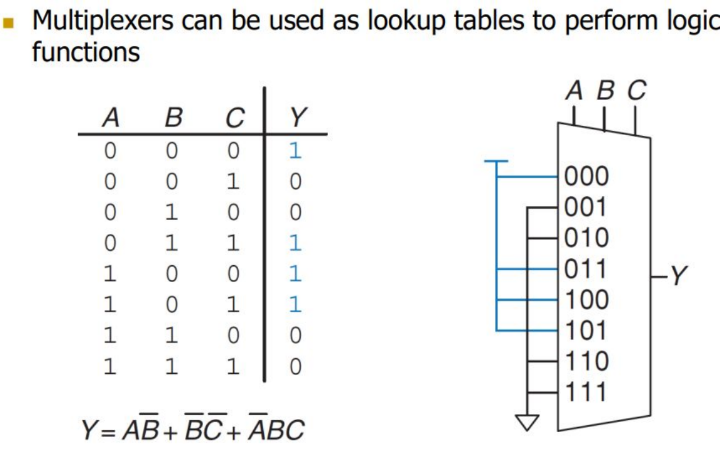
Uses of LUTs:
- PLDs: Used in FPGAs/CPLDs to build custom logic
- Speed: Precomputed outputs → faster than gate-based logic
- Simplifies complex functions → fewer gates
- Function approximation → for math/nonlinear functions
